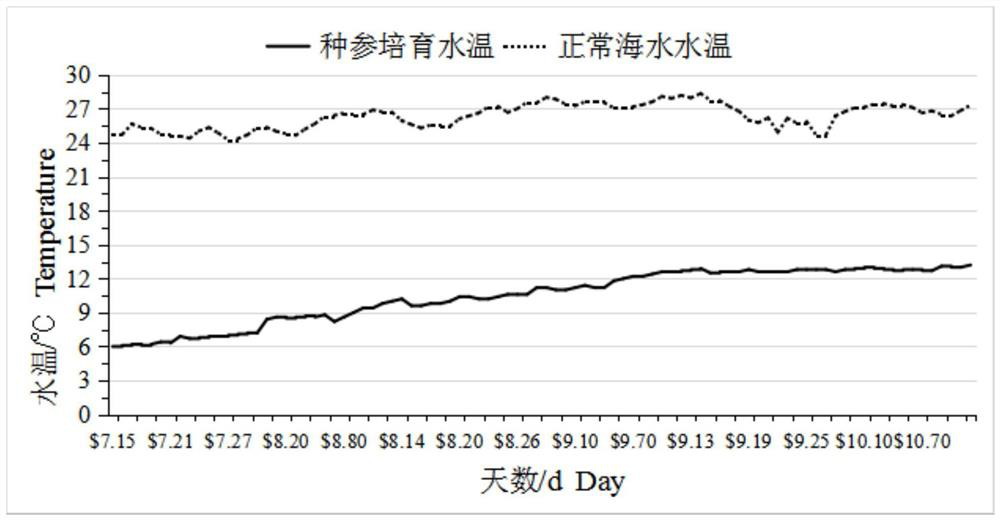South-cultured apostichopus japonicus out-of-season seed production and cultivation method
A sea cucumber imitation, off-season technology, applied in the field of agricultural breeding
- Summary
- Abstract
- Description
- Claims
- Application Information
AI Technical Summary
Problems solved by technology
Method used
Image
Examples
Embodiment 1
[0048] 1) From March to June in the Gregorian calendar every year, during the harvest season of sea cucumbers moved southward, 500 sea cucumbers (more than 200g / head) with full physique, tall and straight spines, no disease, and no trauma were purchased and placed in the modular movable sea cucumbers moved southward. Sea cucumber seed production device.
[0049] 2) Breed under the condition of constant water temperature of 16°C, and feed twice a day, one at 6:00 in the morning and one at 18:00 in the evening, and feed 3% of the body weight, and suck out the residue 2 hours after feeding. Bait and feces.
[0050] During the cultivation of ginseng, the feed was prepared according to the following aspects: 30kg of Sargassum powder, 20kg of Eelweed powder, 20kg of Sargassum powder, 10kg of Ulva pore, 8kg of defatted fish meal, 5kg of oyster shell powder, 5kg of scallop powder, 1kg of multivitamins, egg 1 kg of phospholipids, add the above raw materials in sequence, mix and stir t...
Embodiment 2
[0054] A kind of method for the anti-seasonal seed production and cultivation of imitation sea cucumber that moves southward in Example 1 of the present invention adopts such as Figure 2 to Figure 7 A modular mobile southward imitation japonicus seed production device is shown, including a breeding warehouse 1, a universal wheel 2, a water quality filtering mechanism 3, a temperature control mechanism 4, a pH tester 5, a soft water injection mechanism 6, a dissolving Oxygen detector 7, aerator 8, salinity detector 9, controller and alarm light;
[0055] The temperature control mechanism 4 is installed on the bottom of the breeding warehouse 1, and the working ends of the temperature control mechanism 4 are respectively located at the bottom and inside of the breeding warehouse 1, the water quality filtering mechanism 3 is installed on the breeding warehouse 1, and the universal wheel 2 is installed on the temperature control mechanism At the bottom of 4, a pH detector, a diss...
PUM
| Property | Measurement | Unit |
|---|---|---|
| The average particle size | aaaaa | aaaaa |
Abstract
Description
Claims
Application Information
 Login to View More
Login to View More - R&D Engineer
- R&D Manager
- IP Professional
- Industry Leading Data Capabilities
- Powerful AI technology
- Patent DNA Extraction
Browse by: Latest US Patents, China's latest patents, Technical Efficacy Thesaurus, Application Domain, Technology Topic, Popular Technical Reports.
© 2024 PatSnap. All rights reserved.Legal|Privacy policy|Modern Slavery Act Transparency Statement|Sitemap|About US| Contact US: help@patsnap.com










